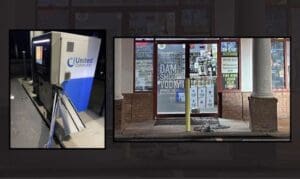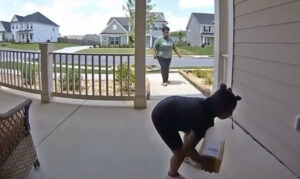Peachtree City Police would like to offer some winter survival and driving tips.
First of all, don’t get stranded in the first place. If you don’t have an important reason for driving in the snow and ice, stay home and wait for the roads to be cleared. Avoid traveling for anything but medical emergencies, or you run the risk of getting stranded. Be prepared.
Ensure that your vehicle is readily equipped with the following essentials before heading out when snow and ice is in the forecast:
* Blankets
* Pillow
* Warm clothing, to be used if you need to change
* Non-perishable food (e.g. nuts, canned tuna, crackers, dry cereal, fruit cups)
* A flashlight and extra batteries
* Matches
* Prescription medications
* A fully-charged phone
* Snow shovel
* Ice scraper
* Jumper cables
* Extra gas
* Add anything else vital that you may find useful if trapped in your car.
Tips for driving in the snow and ice:
* Accelerate and decelerate slowly. Applying the gas slowly to accelerate is the
best method for regaining traction and avoiding skids. Don’t try to get moving in
a hurry. And take time to slow down for a stoplight. Remember: It takes longer to
slow down on icy roads.
* Drive slowly. Everything takes longer on snow-covered roads. Accelerating,
stopping, turning – nothing happens as quickly as on dry pavement. Give yourself
time to maneuver by driving slowly.
* The normal dry pavement following distance of three to four seconds should be
increased to eight to ten seconds. This increased margin of safety will provide
the longer distance needed if you have to stop.
* Know your brakes. Whether you have antilock brakes or not, the best way to
stop is threshold breaking. Keep the heel of your foot on the floor and use the
ball of your foot to apply firm, steady pressure on the brake pedal.
* Don’t stop if you can avoid it. There’s a big difference in the amount of
inertia it takes to start moving from a full stop versus how much it takes to get
moving while still rolling. If you can slow down enough to keep rolling until a
traffic light changes, do it.
* Don’t power up hills. Applying extra gas on snow-covered roads just starts
your wheels spinning. Try to get a little inertia going before you reach the hill
and let that inertia carry you to the top. As you reach the crest of the hill,
reduce your speed and proceed downhill as slowly as possible.
* Don’t stop going up a hill. There’s nothing worse than trying to get moving up
a hill on an icy road. Get some inertia going on a flat roadway before you take on
the hill.
* Stay home. If you really don’t have to go out, don’t. Even if you can drive
well in the snow, not everyone else can. Don’t tempt fate: If you don’t have
somewhere you have to be, watch the snow from indoors.
Tips for long-distance winter trips:
* Keep at least half a tank of gasoline in your vehicle at all times.
* Pack a cellular telephone with your local AAA’s telephone number, plus
blankets, gloves, hats, food, water and any needed medication in your vehicle.
* Don’t over exert yourself if you try to push or dig your vehicle out of the snow.
* Tie a brightly colored cloth to the antenna or place a cloth at the top of a
rolled up window to signal distress. At night, keep the dome light on if possible.
It only uses a small amount of electricity and will make it easier for rescuers to
find you.
* Make sure the exhaust pipe isn’t clogged with snow, ice or mud. A blocked
exhaust could cause deadly carbon monoxide gas to leak into the passenger
compartment with the engine running.
* Use whatever is available to insulate your body from the cold. This could
include floor mats, newspapers or paper maps.
* If you are stranded run the engine and heater just long enough to remove the
chill and to conserve gasoline.











Leave a Comment
You must be logged in to post a comment.